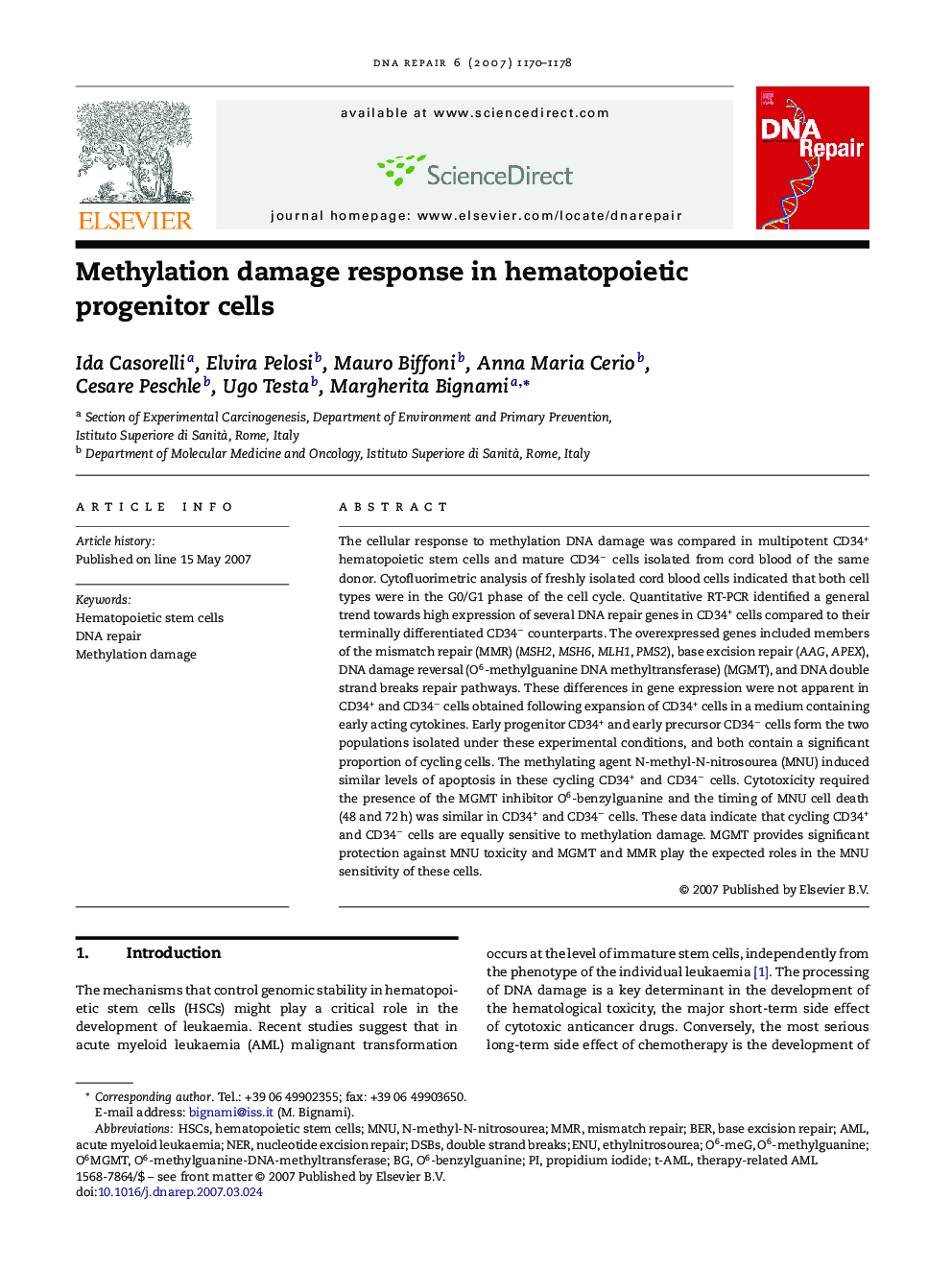| Article ID | Journal | Published Year | Pages | File Type |
|---|---|---|---|---|
| 1981413 | DNA Repair | 2007 | 9 Pages |
The cellular response to methylation DNA damage was compared in multipotent CD34+ hematopoietic stem cells and mature CD34− cells isolated from cord blood of the same donor. Cytofluorimetric analysis of freshly isolated cord blood cells indicated that both cell types were in the G0/G1 phase of the cell cycle. Quantitative RT-PCR identified a general trend towards high expression of several DNA repair genes in CD34+ cells compared to their terminally differentiated CD34− counterparts. The overexpressed genes included members of the mismatch repair (MMR) (MSH2, MSH6, MLH1, PMS2), base excision repair (AAG, APEX), DNA damage reversal (O6-methylguanine DNA methyltransferase) (MGMT), and DNA double strand breaks repair pathways. These differences in gene expression were not apparent in CD34+ and CD34− cells obtained following expansion of CD34+ cells in a medium containing early acting cytokines. Early progenitor CD34+ and early precursor CD34− cells form the two populations isolated under these experimental conditions, and both contain a significant proportion of cycling cells. The methylating agent N-methyl-N-nitrosourea (MNU) induced similar levels of apoptosis in these cycling CD34+ and CD34− cells. Cytotoxicity required the presence of the MGMT inhibitor O6-benzylguanine and the timing of MNU cell death (48 and 72 h) was similar in CD34+ and CD34− cells. These data indicate that cycling CD34+ and CD34− cells are equally sensitive to methylation damage. MGMT provides significant protection against MNU toxicity and MGMT and MMR play the expected roles in the MNU sensitivity of these cells.
